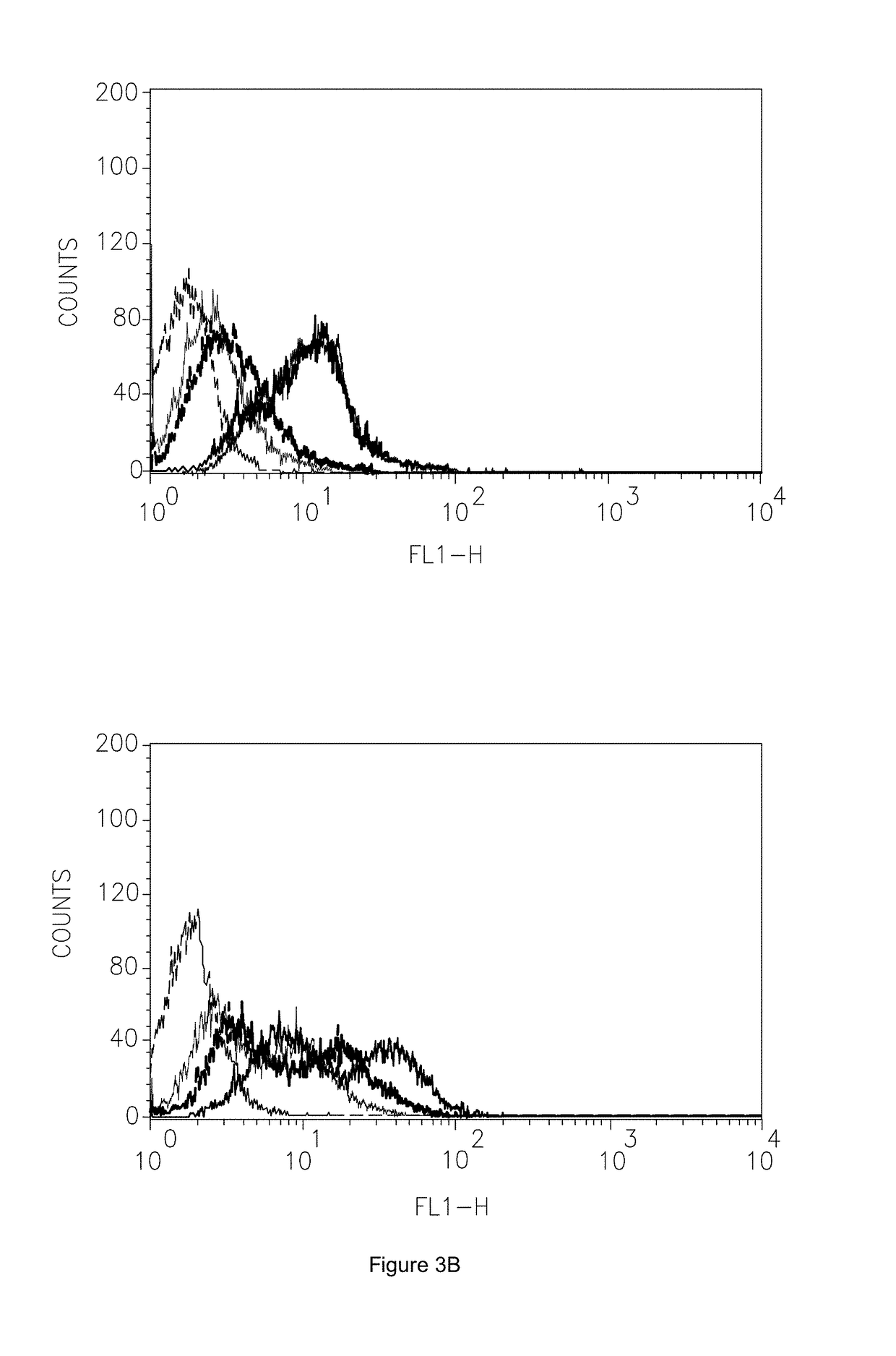Delta receptor agonist peptides and use thereof
- Summary
- Abstract
- Description
- Claims
- Application Information
AI Technical Summary
Benefits of technology
Problems solved by technology
Method used
Image
Examples
example 1
Negative Selection of Non-Relevant Phage Clones
[0150]The phage stock pool was incubated sequentially on a series of off-target cells representing fibroblasts, lymphocytes and several tissues, in order to remove as many phage clones as possible that bound irrelevant cell membrane components. FIG. 3A shows the decrease in log10 concentration after incubation on each cell type. At the end of the process, the phage concentration had been reduced by almost 8 orders of magnitude. This “absorbed phage pool” was used for positive selection of target-binding phage.
example 2
Positive Selection of δ-Opioid Binding Phage Clones and their Displayed Peptide Sequences
[0151]C6 glioma cells were used to positively select δ-opioid binding phage. Flow cytometry assays showed that 90% of the cells expressed the δ-form of the receptor and 50% expressed the μ-form (FIG. 3E). C6 cells were exposed to the absorbed phage pool, washed and bound phage eluted. After titration, 15 individual clones were randomly selected, amplified and the DNA and amino acid sequences of their displayed peptides determined.
[0152]Table 1 shows their amino acid sequences. While in almost every position there was repetition of amino acids between the clones, preliminary analysis did not reveal a consensus sequences between the clones.
TABLE 1Position in peptidePeptide1234567891011121AspProGlnValThrGlyArgHisTrpHisAspLeu2AlaTyrGluGlyProGlnIleIleAlaSerLysSer3LysGlyProThrThrSerGluLeuAsnSerProLys4ThrAspLeuLysSerSerTyrSerProArgTrpLeu5AspAspLeuArgAspSerMetArgSerAlaAlaPro6PheTyrSerGluSerAsnLeuTrpLeuG...
example 3
Validation of δ-Opioid Receptor Binding
[0153]The 15 C6-binding phage clones were tested for δ-opioid receptor binding in a competitive cell-ELISA versus the δ-receptor agonist DSLET. FIG. 1A shows that 3 clones, nos. 1, 8 and 9, inhibited significantly the binding of agonist at both 20 and 100 nM concentrations. The 12 other clones were unable to inhibit DSLET binding and presumably bind to other C6 membrane components. Clones 1, 8 and 9 were then tested for their ability to compete with the binding of the μ-opioid agonist DAMGO. The results, shown in FIG. 1B, reveal that the peptide displayed by clone 1 was also able to inhibit DAMGO binding, but those displayed by clones 8 and 9 were not. On the basis of these results, further studies were carried out on clones 8 and 9. The peptides displayed by these clones were synthesized. The peptide displayed by clone 9 was renamed Peptide 1 and that displayed by clone 8 was renamed Peptide 2.
[0154]To validate that the free peptides indeed bo...
PUM
| Property | Measurement | Unit |
|---|---|---|
| Fraction | aaaaa | aaaaa |
| Length | aaaaa | aaaaa |
| Affinity | aaaaa | aaaaa |
Abstract
Description
Claims
Application Information
 Login to View More
Login to View More - R&D
- Intellectual Property
- Life Sciences
- Materials
- Tech Scout
- Unparalleled Data Quality
- Higher Quality Content
- 60% Fewer Hallucinations
Browse by: Latest US Patents, China's latest patents, Technical Efficacy Thesaurus, Application Domain, Technology Topic, Popular Technical Reports.
© 2025 PatSnap. All rights reserved.Legal|Privacy policy|Modern Slavery Act Transparency Statement|Sitemap|About US| Contact US: help@patsnap.com



